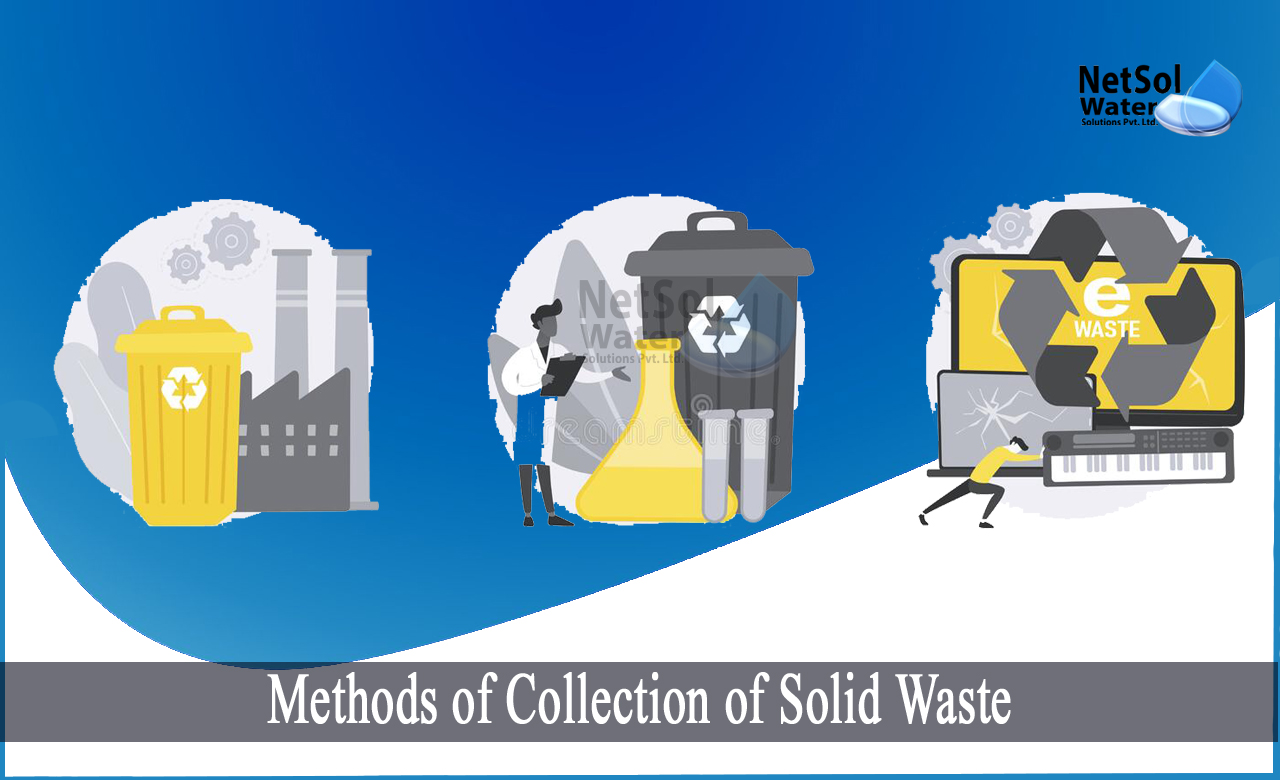What are the Methods of Collection of Solid Waste?
For the preservation of the environment's quality, public health, and safety, proper solid-waste collection is crucial. It is a labour-intensive operation, as it makes up around three-quarters of the overall cost of solid-waste management.
Although, the task is frequently allocated to public personnel, there are occasions when it is more cost-effective for private businesses, to carry out the activity on the municipality's behalf, or for private collectors to be paid by individual property owners.
There are several methods of collection of the solid waste. In this article, we will discuss some of the methods of solid waste collection.
Solid waste collection
For each collecting vehicle, a driver and one or two loaders are needed. These are normally enclosed, compacting trucks with a maximum capacity of 30 cubic metres (40 cubic yards).
Solid waste transporting and gathering
Choosing the best collecting route is a difficult issue, particularly in large and densely populated cities. Selecting an optimal route necessitates the use of computer calculations,which take into consideration all of the numerous design elements, in a big and complicated network.
An optimal route is one that yields the most effective utilization of labour and equipment. Collection frequency, hauling distance, service type, and climate are among the variables. Due to low population densities and high unit costs, waste collection can be particularly challenging in rural locations.
Frequency of solid waste collection
Because food waste decomposes quickly, refuse collection often occurs at least once, each week.
Garbage grinders or garbage disposals can reduce the amount of trash in a particular home's trash. The additional load that ground waste places on sewerage systems can typically be handled.
Waste separation and recycling
Source separation and recycling programmes are now widely used in communities, whereby residents and businesses separate recyclables from waste, and put them in separate containers for collection.
Additionally, some towns offer drop-off locations where citizens can drop off recyclables.
Transfer areas or solid waste transfer stations
One or more transfer stations can be required,if the end location of the waste is far from the town where it is created.
A transfer station is a hub where garbage from various collection trucks is consolidated into a bigger truck, like a tractor-trailer unit. About 76 cubic metres (100 cubic yards) of uncompacted waste can be transported in open-top trailers, to a local processing or disposal facility. There are also closed compactor-type trailers, however,these needs to have ejector systems.
Several collection trucks empty straight onto the transfer vehicle at a station, with direct discharge. The solid waste is first hoisted or pushed into the transport truck, using machinery in a storage discharge type of station, after being emptied into a storage pit or onto a platform.
Methods of Collection of Solid Waste
In general, there are two ways to collect solid waste:
1: A system for hauling containers
In this system, the container is transported from the location of collection to the processing facility, transfer station, or final point of disposal.
2: A system of stationary containers
At the moment of collection, the container in this system is dumped into the collection vehicles.
Layout of the Collection Route
The community, industrial park, and similar areas should be separated into collection districts, in which a number of collection routes must be drawn out, in order to run a solid waste collection system, properly.
A basic set of rules should be followed when laying out routes, some of which include:
1. The route should be continuous and should not cross over.
2. Rush hour traffic shouldn't be collected in congested regions.
3. To avoid making a left turn, collect a dead end street while it is to the right of the main roadway.
4. Collect a street on all sides, as practically possible.
5. Choose a collecting pattern that is constant as practically as possible.
6. It is preferable for the vehicle to be collecting while it is driving down-hill, rather than up slope on steep streets. This will save time and energy, and is safer.
How can we assist?
The system designers at Netsol Water will be able to assess, all input and output needs for the client, and select the most efficient, practical, modern and sustainable solid waste management technique, for municipalities, residential areas, commercial areas, as well as industries. We can also ensure sustainable methods of solid waste collection and disposal, along with recycle and reuse.
Netsol Water is Greater Noida-based leading water & wastewater treatment plant manufacturer. We are industry's most demanding company based on client review and work quality. We are known as best commercial RO plant manufacturers, industrial RO plant manufacturer, sewage treatment plant manufacturer, Water Softener Plant Manufacturers and effluent treatment plant manufacturers. Apart from this 24x7 customer support is our USP. Call on +91-9650608473, or write us at enquiry@netsolwater.com for any support, inquiry or product-purchase related query.



